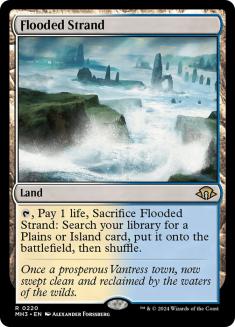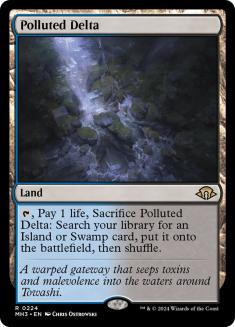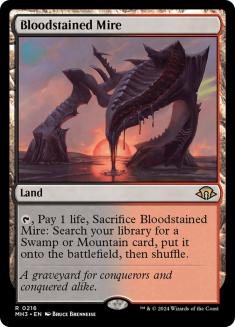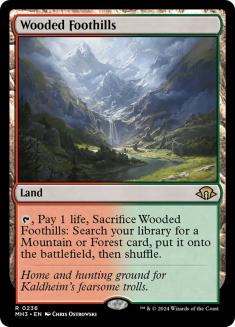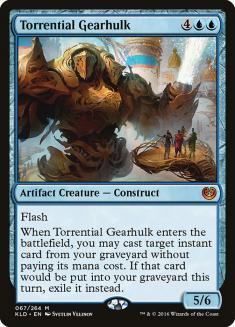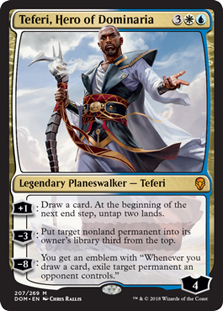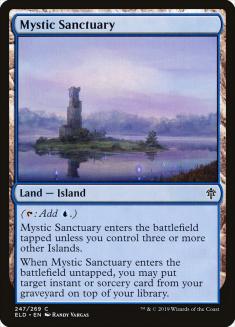Context is everything in Magic. Despite this fact, card evaluation in a vacuum is one of the collective’s favorite things to do.
I can’t fault anyone for getting caught up in the desire to simply declare cards good or bad. After all, there’s a reason I put together a Top 10 list every time a new set is released. It’s fun, and there is certainly information to be gained along the way. However, without knowing the specifics of a metagame, any efforts at single-card evaluation are unactionable. We shouldn’t hesitate to consider why our preliminary conclusions around a new card fail. Re-evaluating potential applications is part of the growth process.
Good deckbuilders have learned this lesson when it comes to new Magic cards. But it seems we’ve been a little slower on the uptake when it comes to old Magic cards entering brand-new formats (and at set rotation as well, but that’s an article for another time). It makes sense we’d all struggle in this context. The launch of a new format is an exceedingly rare occurrence, and for many folks who have found the game in the post-Arena boom, Pioneer represents the first brand-new format they’ve seen.
The struggle to adapt to new circumstances is clearly illustrated by Dig Through Time’s inability to establish a top-tier position in the metagame—thus far. I want to discuss some of the changes in context surrounding Dig Through Time and identify three of the biggest failures to adapt to these changes that I see in current Pioneer lists.
I want to make clear that in pointing out these flaws, I’m not trying to disparage either the decks or deckbuilders I’m using as examples. In fact, I think one of the decks I’m identifying as flawed is very capable of occupying space in the top tier of the metagame. I just want to point out reasons why Dig Through Time has been merely a good card in the format as opposed to the insta-ban candidate we all expected.
Let’s start with some examples of “flawed” Dig Through Time decks. I’ll be referring to them throughout the discussion.
Creatures (20)
- 1 Icefall Regent
- 4 Jace, Vryn's Prodigy
- 4 Glorybringer
- 4 Rekindling Phoenix
- 4 Bonecrusher Giant
- 3 Brazen Borrower
Planeswalkers (2)
Lands (24)
Spells (14)
Sideboard

Creatures (11)
Planeswalkers (8)
Lands (24)
Spells (17)

Creatures (12)
Lands (23)
Spells (25)

Creatures (6)
Lands (18)
Spells (36)
- 4 Strategic Planning
- 4 Opt
- 2 Izzet Charm
- 2 Commune with the Gods
- 4 Dig Through Time
- 4 Jeskai Ascendancy
- 1 Wild Slash
- 3 Fiery Impulse
- 4 Attune with Aether
- 4 Unbridled Growth
- 4 Sylvan Awakening
Sideboard

Enable Your Dig Through Time
The biggest impediment to Dig Through Time’s effectiveness was present on Day 1 of the Pioneer format.
Dig Through Time always previously existed alongside fetchlands.
In Standard, Modern, and Legacy your manabase was consistently reducing the cost of Dig Through Time by several mana without any real downside. It’s easy to take this discount for granted and assume that spells will naturally make their way to the graveyard. While this is true, think how much worse some of the best cards in the history of Magic become with the addition of a single mana to their converted mana cost. Adding two mana to a CMC can make a card downright unplayable. If Dig Through Time is going to be the format-shaping force it previously was, it must find effective discounts.
The Izzet Midrange deck above has Opt, some conditional removal, Adventure spells, and a bunch of fairly resilient threats. How is this deck ever casting its first Dig Through Time at a palatable discount, much less the second and third copy? The Sultai Midrange list doesn’t even attempt to play enablers. If Dig Through Time is going to be a five- to six-mana spell, there are just better options to look at. The version of Lotus Field combo above is choosing to play Shimmer of Possibility over Strategic Planning, and this just strikes me as a mistake in a deck with four Dig Through Time. I understand prioritizing immediate access to Lotus Field, but surely gumming up your hand with uncastable Digs can be equally damning. At the very least, I would contemplate a split.
Deckbuilders must re-evaluate support spells to factor in graveyard velocity as one of their key metrics if they plan to get maximum upside out of Dig Through Time. The number of Strategic Plannings, Grisly Salvages, and Satyr Wayfinders is just far too low for my liking.
Dig Through Time Enablers Must Simultaneously Provide Other Benefits to Your Gameplan
Just swapping enablers won’t be enough to break Dig Through Time. Other aspects of the deck must effectively leverage the new strategic angles opened by more effective support cards. In some instances, that requires utilizing the graveyard even more. Other times, you want to better leverage the card types your enablers grant you access to. A fine example of this would be finding more meaningful enchantments to play in Jeskai Ascendancy in order to better leverage Commune with the Gods.
While I’m high on the archetype overall, my biggest problem with the Lotus Field Combo decks is that they trend too far in the other direction. It feels like they are relying on combo pieces like cycled Viziers and spent Sylvan Scryings in order to turn on Dig. Now, granted, the rules are somewhat different for Lotus Field Combo because they do generate so much mana in the spots where they have effectively found Lotus Field. However, it still feels like the best version of Lotus Field will ultimately have access to a greater number of Dig Through Time at all stages of the game.
Play Meaningful Cards
Resolving Dig Through Time is irrelevant if it’s not enough to push the game in your favor. Sultai and Izzet Midrange both feel like they are lacking meaningful finds. If everything in your deck is a one-for-one or needs to spend multiple turns on the battlefield to accrue an advantage (see: Sultai Midrange’s planeswalkers), then you can’t invest deckbuilding effort into maximizing Dig. It’s not going to matter when you resolve it a large percentage of the time anyway!
Dig Through Time needs to snowball games, and the best way for it to do that is to assure it dramatically alters the battlefield. Supreme Verdict is one super-clean method of assuring this takes place, especially now that Smuggler’s Copter has left the format.
I also like cards that let you chain Dig Through Time in the late-game when mana is no longer an issue. Torrential Gearhulk and Mystic Sanctuary are great ways to get Dig Through Time rebuys, and Jace, Vryn’s Prodigy can also get the job done despite seeing less play in the present metagame.
Of course, combo decks mostly get to ignore this concern, as their priority should be to find the pieces that just end the game. Still though, I wonder if there is room for more powerful removal effects in something like the Jeskai Ascendancy decks. Maybe something like Solar Blaze that won’t affect your Sylvan Caryatids is the way to go?
Effective Builds
Let’s close with a look at two decks that have effectively built around Dig Through Time and a third that provides a potential blueprint for a rebuild of one of Pioneer’s early staple archetypes.
Planeswalkers (2)
Lands (25)
Spells (33)
- 4 Strategic Planning
- 4 Opt
- 2 Cyclonic Rift
- 4 Dig Through Time
- 3 Hieroglyphic Illumination
- 4 Haze of Pollen
- 4 Nexus of Fate
- 4 Growth Spiral
- 4 Wilderness Reclamation
Sideboard

I don’t have much to say about Simic Nexus except to acknowledge it as a superb Dig Through Time deck. The core problem with Simic Nexus (if there is one) is that its linear approach to winning games will shine only in certain metagames. Foundationally, though, all the boxes are checked. Enablers are making Dig Through Time vastly better while attempting to achieve the core goal of the deck—resolving Wilderness Reclamation and Nexus of Fate. Meanwhile, a resolved Dig is almost always a knockout punch. This is a well-built deck that will always pop up when opponents fail to prepare appropriately.
Planeswalkers (8)
Lands (26)
Spells (26)

This is the best-looking version of Azorius Control I’ve seen in Pioneer. Think about how this deck contemplates the three points raised above. Amnesiac was able to find eight one-mana cantrips in Hieroglyphic Illumination and Censor that simultaneously can contribute to the core goals of their deck. This continues at the two-mana slot, where Search for Azcanta, Azorius Charm, and Irrigated Farmland all ensure the graveyard is ready when it’s time to go digging. This deck should use all its mana on virtually every turn of the game. That’s the kind of efficiency control will have to display in order to reach the top tiers of Pioneer.
I love how strong the options are one Dig Through Time is resolved. Teferi, Hero of Dominaria has fallen out of favor recently due to the steep up-front mana investment, but Amnesiac understands that a resolved Dig Through Time should find you answers to just about anything imaginable, and Teferi is a big part of that.
Previously, Dig Through Time dominated metagames because of how well subsequent copies built on the first. With the absence of the passive graveyard juicing of fetchlands, it can occasionally be hard to ensure the third and fourth copy with be castable in the absence of hard enablers like Thought Scour. Amnesiac found a great solution to this problem with three copies of Mystic Sanctuary. It’s the perfect card to ensure the Dig Through Time snowball can occur without having to suffer the pain of multiple dead copies on the early turns of the game. Amnesiac’s Digs can also find the brutal combo of Narset, Parter of Veils and Memory, despite both cards being played in extremely small numbers.
The only question I have about this deck is whether a third copy of Dig Through Time can be supported. Overall, though, I’m gushing for good reason. This is the way forward for pure control in this format.
Creatures (12)
- 2 Tasigur, the Golden Fang
- 3 Jace, Vryn's Prodigy
- 2 Torrential Gearhulk
- 4 Gilded Goose
- 1 Murderous Rider
Planeswalkers (3)
Lands (24)
Spells (21)

This final deck is certainly in the experimental stage, but it’s an attempt to refocus Sultai Midrange on what matters while better leveraging the potential early clock that Oko, Thief of Crowns provides. Too often Sultai Midrange would find angles in the mid-game, only to fail at effectively bridging into the late-game. The combination of Dig Through Time, Tasigur, and Torrential Gearhulk should provide both closing speed and a way to grind out the games that have gone long.
This is all without giving up access to the best early-game answer suite in the Pioneer format. Grisly Salvage is the glue that holds everything together, and I like how it gives the deck more access to instant speed squeeze plays. Sultai can put opponents in a lot of positions where their best play is to do nothing, but often struggles to leverage the mana advantage created by these scenarios. My hope is that Grisly Salvage solves this issue while keeping the delve fuel flowing.
While Dig Through Time has yet to set the format on fire, I think we deckbuilders only have ourselves to blame. If you work hard for Dig Through Time, it will reciprocate in kind. Keep sight of the principles of deckbuilding above, and help me ensure that the next hot topic around the Wizards of the Coast lunch table is, “What are we going to do about Dig Through Time?”


